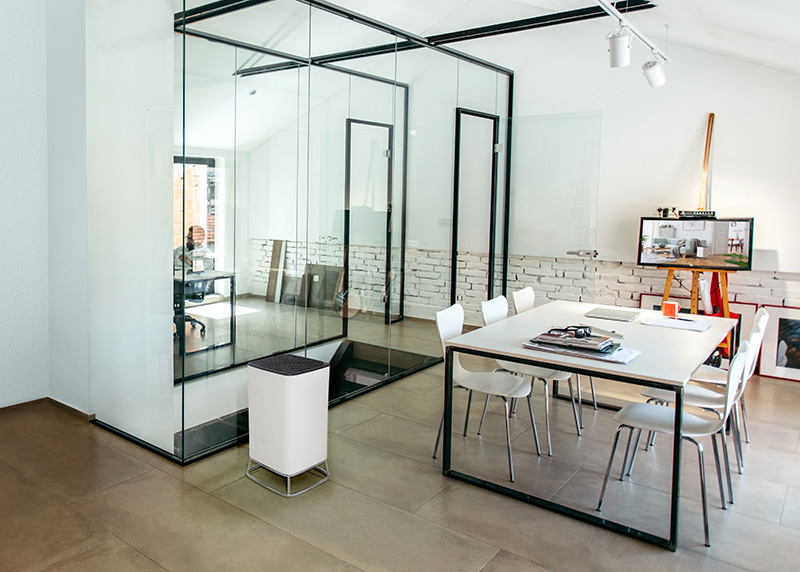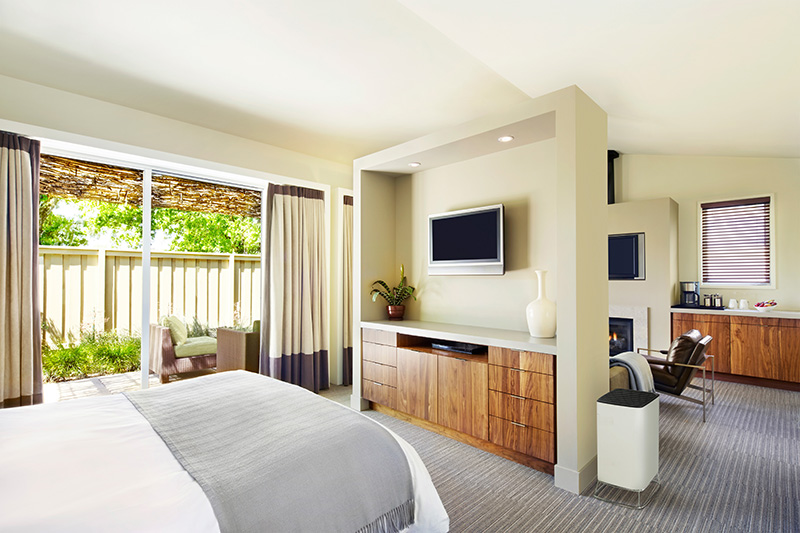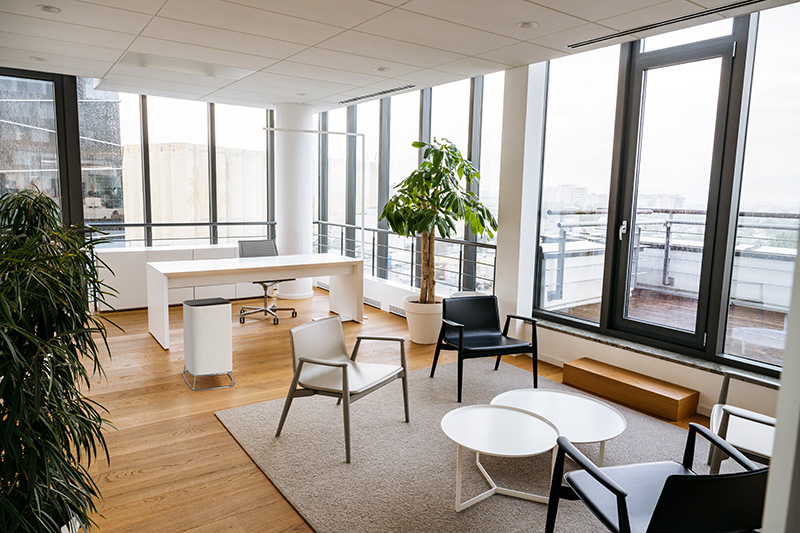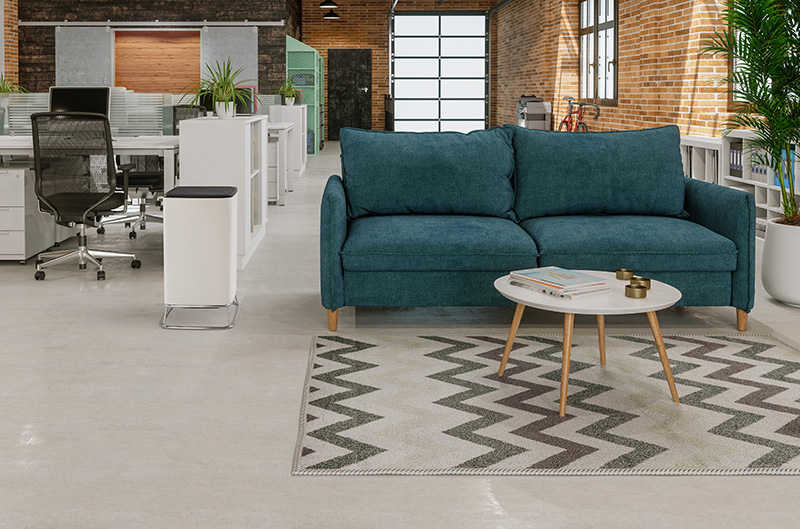



Boston, MA Before COVID-19, most people didn’t give their at-work air quality a second thought. It was an invisible problem, and easy to ignore. But times have changed. The pandemic raised awareness of virus transmission as well as the negative effects of poor indoor air quality (IAQ) on overall health and longevity. Recent research indicates that even low levels of pollution can cause a wide variety of serious health problems and can reduce your lifespan. It’s no wonder indoor air quality is a hot topic.
For many, safe indoor air is now a return-to-office requirement. According to the 2022 BOMA/YARDI COVID-19 Impact Survey, “Additional infrastructure to safeguard against harmful pathogens” was the most important budget priority respondents would set for landlords.
Employers want better IAQ for reasons that go beyond safety. Real-world studies link poor IAQ with absenteeism, lower productivity, and impaired cognitive function. In one large study, poor ventilation was associated with a 53% increase in sick leave. In another, volunteers working in well-ventilated conditions scored 61% higher on cognitive function tests than when they worked in typical office conditions. And that was before the pandemic.

Another lesson learned, thanks to COVID-19: Existing HVAC systems are not up to the task of keeping office spaces safe from viruses and other ultrafine pollutants.
“There’s a gap between what HVAC systems can do and healthy indoor air,” said Larry Rothenberg, president of Agentis Air, an indoor air quality technology company which makes in-room air purifiers, “and that creates an obstacle to a smooth return-to-office transition.”
According to Rothenberg, “Current building standards focus on building efficiency and safe equipment operation, not on human health. Existing systems can’t be adapted to use the higher-efficiency filters needed to remove viruses and ultrafine particles. Compounding the problem, HVAC systems are only run 25% of the time.”
Spurred by the pandemic, the EPA has created a voluntary action plan for businesses, The Clean Air in Buildings Challenge, to provide guidance on improving indoor air quality. The complete document includes detailed steps and resources: epa.gov/indoor-air-quality-iaq/clean-air-buildings-challenge. Assessment, the first step in the challenge, can happen quickly, but long lead times and considerable capital expenditure may be needed to make system-level adaptations. And systems may still fall short. For this reason, the EPA, along with ASHRAE, the NIH, and the CDC recommend the addition of in-room air purifiers.
.jpg) Building a clean air bridge with in-room air purifiers
Building a clean air bridge with in-room air purifiers
Using a layered approach with HVAC systems, air purifiers can be the bridge to healthy indoor air, removing ultrafine dust, copier toner, 3D printer inks, smoke, viruses, germs, bacteria, mold, and outdoor pollutants, including pollen, smog, and wildfire smoke.
When selecting air purifiers, there are five important considerations, explains Rothenberg: size, energy use, ozone safety, effectiveness over time, and maintenance costs.
Size
To select air purifiers, it is helpful to understand two key terms:
Clean Air Delivery Rate (CADR) is an industry standard, set by the Association of Home Appliance Manufacturers (AHAM), to compare the cleaning power between new air purifiers. CADR ratings between zero and 450 are provided for each of three pollutants: smoke, dust, and pollen. The CADR needed depends on room size and desired air changes per hour.
Air Changes per Hour (ACH) refers to the number of times the air in a room circulates in a one-hour period. The more air changes per hour, the faster an air purifier will clean the room. In most office settings, an ACH of 3 (every 20 minutes) is a good target, when combined with HVAC-system filtration and other ventilation. If in-room air purifiers are the only air filtration source, the ACH should be increased to 4 or 5, filtering the volume of air every 12 to 15 minutes.
When working with clients, Rothenberg uses a simple formula to see if the air purifier will deliver the desired air changes per hour. The estimated ACH is calculated as [CADR x 60 minutes]/Room Volume in cubic s/f. For example, an air purifier with a CADR of 250, in a 500 s/f room, with 8-foot ceilings, will deliver an estimated ACH of 3.75.
Energy use
This is easy: limit your search to air purifiers that are Energy Star certified (https://www.energystar.gov/productfinder/product/certified-room-air-cleaners/results)
Ozone safety
Also easy: focus on air purifiers that are certified as ozone-safe by the California Air Resources Board, which has the strictest standards in the country. (https://ww2.arb.ca.gov/list-carb-certified-air-cleaning-devices)

Effectiveness over time
It’s important to choose an air purifier that removes ultrafine particles (look for independent test results) and that will remain at peak performance between filter changes.
Mechanical (HEPA) air purifiers, using a technology little changed since the 1940s, physically block and trap particles in a filter. As the filter fills with particles, it clogs, and the clean airflow drops. So, effectiveness also drops off.
Electrostatic APARTTM technology from Agentis Air, offers a different approach. Developed by research scientists and air quality experts at the University of Washington, APART removes all particles, including the most dangerous ultrafine pathogens, using non-clogging electrostatic technology, so clean air can flow freely, and effectiveness stays constant between filter changes. APART is the foundation for the company’s BrioTM air purifiers. “All HEPA air purifiers use older, mechanical technology. We wanted to provide a more effective solution than HEPA, with less filter expense and waste, and near-zero maintenance. So, we designed Brio to be better than HEPA, and to do what HEPA can’t,” Rothenberg said.
Maintenance costs
“Pay attention to replacement filter prices and replacement frequency,” said Rothenberg, “which can become a major expense and maintenance item.” Once again, technology differences matter. Due to clogging, HEPA air purifiers may need filter changes every two to three months. With multiple offices and over many years of use, this can get expensive. Under the same conditions, Brio’s non-clogging, high-capacity particle collection cartridge can last a full year or longer before replacement.
Better indoor air at work is a must have, reassuring nervous employees and tenants, and supporting office productivity. When selected carefully, in-room air purifiers are a quickly and easily implemented tool to create healthy workplace IAQ.
Resources:
• Guide to Better Indoor Air at Work, https://agentisair.com/guide-to-better-indoor-air-at-work/
• Indoor Air Quality. https://www.epa.gov/indoor-air-quality-iaq
• Interactive Ventilation Tool, https://www.cdc.gov/coronavirus/2019-ncov/prevent-getting-sick/interactive-ventilation-tool.html
• Indoor Air Quality in Offices and Other Large Buildings, https://www.epa.gov/indoor-air-quality-iaq/indoor-air-quality-offices-and-other-large-buildings
• Care For Your Air, https://www.epa.gov/indoor-air-quality-iaq/care-your-air-guide-indoor-air-quality
Established in 2019, Agentis Air is a collaboration of research scientists, engineers, and air quality experts on a mission to improve human health and longevity through better indoor air purification technology.
With decades of university research and development experience, our company is focused on transformational air purification technologies with broad applications for institutional, commercial, and consumer markets.
Company president Larry Rothenberg knows firsthand the devastating effect poor air quality has on families and lives, in ways both seen and unseen. After losing a family member many years ago to complications from asthma, the connection between clean air and longevity, and making air healthier, became a personal mission for him. He works with the Agentis Air development team and global partners to bring the company’s patented technologies to consumer, commercial, and institutional markets.